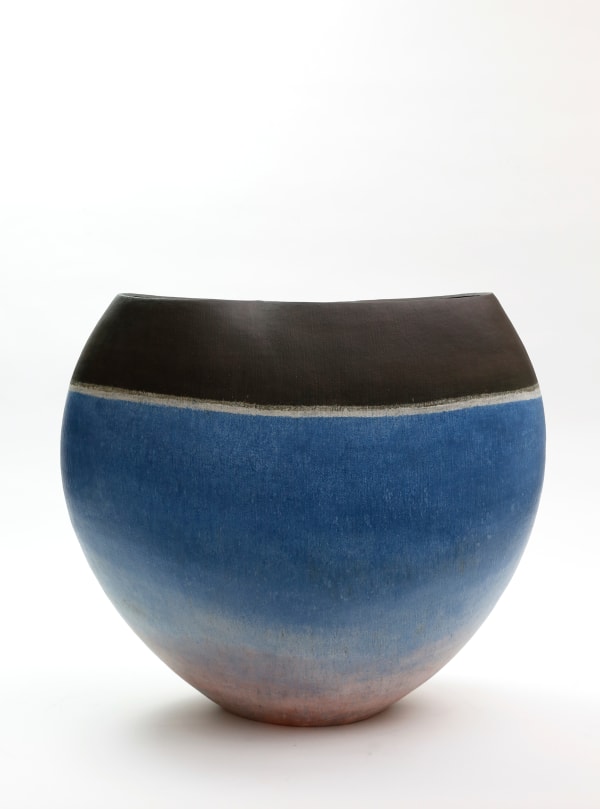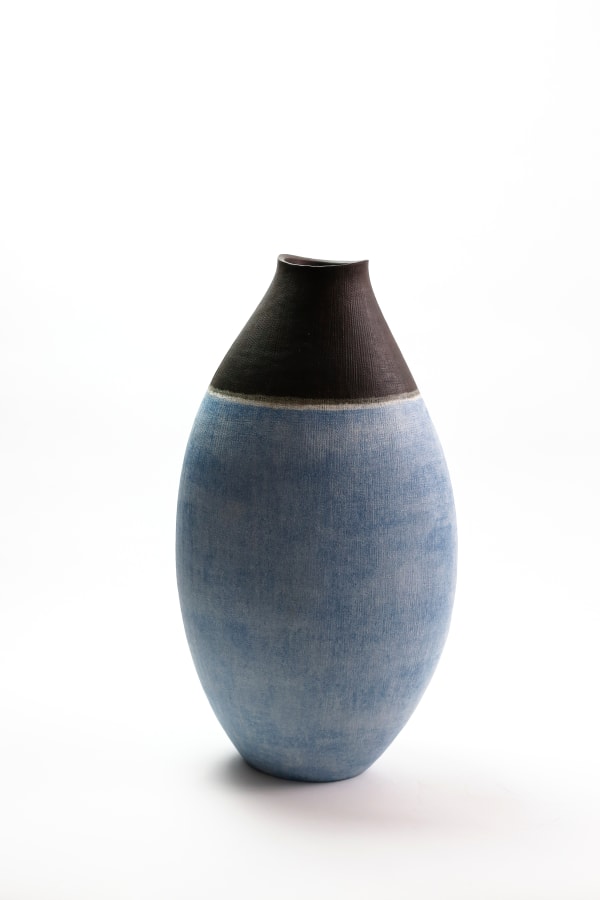Floating Vessels: Stoneware by Mitsukuni Misaki
-
OverviewTimes continue to change.
But only when the rhythm and pace of my body adapt.
I am drawn by the look and touch of the maturing artwork.
Slow against time's movement.
Is it light or air that moves me?
I create to keep feeling that connection.
Emanating the familiar sense that I cannot quite describe.— Mitsukuni MisakiExhibition opens January 18, 2024.
- Opening Reception: January 18, 6 PM to 8 PM.
- All visitors are welcome: Thurs.—Sat. 11 AM to 6 PM.
- Gallery open by appointment only: Mon.—Wed. 11 AM to 6 PM.
-

It is a nostalgic view when the doors of the re-fired kiln swing open. Standing there is a devoid blue against the colors of the earth.
Misaki envisions his works, twisted and built with his own hands, amongst the landscape as the ancient Neanderthals saw it. Even today, Misaki continues his earnest search for a relatable center of gravity common to all humankind.
— Shoko Aono, January 2024
-
Works
-
 Mitsukuni Misaki, Color-Glazed Mud Vessel (2023), H15 1/8 x W10 1/4 x D5 1/2 in
Mitsukuni Misaki, Color-Glazed Mud Vessel (2023), H15 1/8 x W10 1/4 x D5 1/2 inMisaki’s resolute experimentation on thousands of discarded works has precipitated a deep indigo blue that signifies the ambiguous divide between sea and sky.
A stylistic pioneer, Misaki has been acclaimed for his saideibachi and saiyuudeiki ceramic artworks. Awards for his creative practice include the Japan Kōgei Association Encouragement Price, the Japan Ceramic Art Exhibition Grand Prix (Chichibunomiya Trophy), the Japan Ceramics Biennale Special Merit Prize, the Encouragement Prize at the Kobe Biennale, and the 5th Kikuchi Biennale Grand Prix.
For only the second time in the United States, unearth the mesmerizing designs and perennial narrative of Misaki’s signature grand vessels.
-

Mitsukuni Misaki, Color-Glazed Mud Vessel 12 (2023), H12 5/8 x W15 3/4 x D6 3/4 in
In 1993, art critic Yoshiaki Inui praised Misaki’s Saideibachi, which received the Chichibunomiya Trophy, the highest award at the Japan Ceramic Art Exhibition, as follows: “Few works if any harbor so much tension, while being so serene.” This serenity and tension constitute the lifeblood of Misaki’s works, which cannot materialize without either.
This exhibition includes Saiyuudeiki, which, unlike Misaki’s slender, trim, bian-bu (flattened circular form)-shaped works to date, has a well-balanced, ample form. I believe this represents a shift from what the artist calls “silence within movement” to “movement within silence.” The vivid blue surface is the result of firing after rubbing on four layers of slip—pale blue, followed by blue, then white, and blue again—and rubbing black slip and brown slip on the rim before smoothening the result with a spatula. The work has the feel and appearance of an object exposed to and matured slowly by time.
— Koichi Mori
Art Critic; Executive Director, Japan Ceramic Society
for "Being Boundless," 2016
-
Installation Shots






























